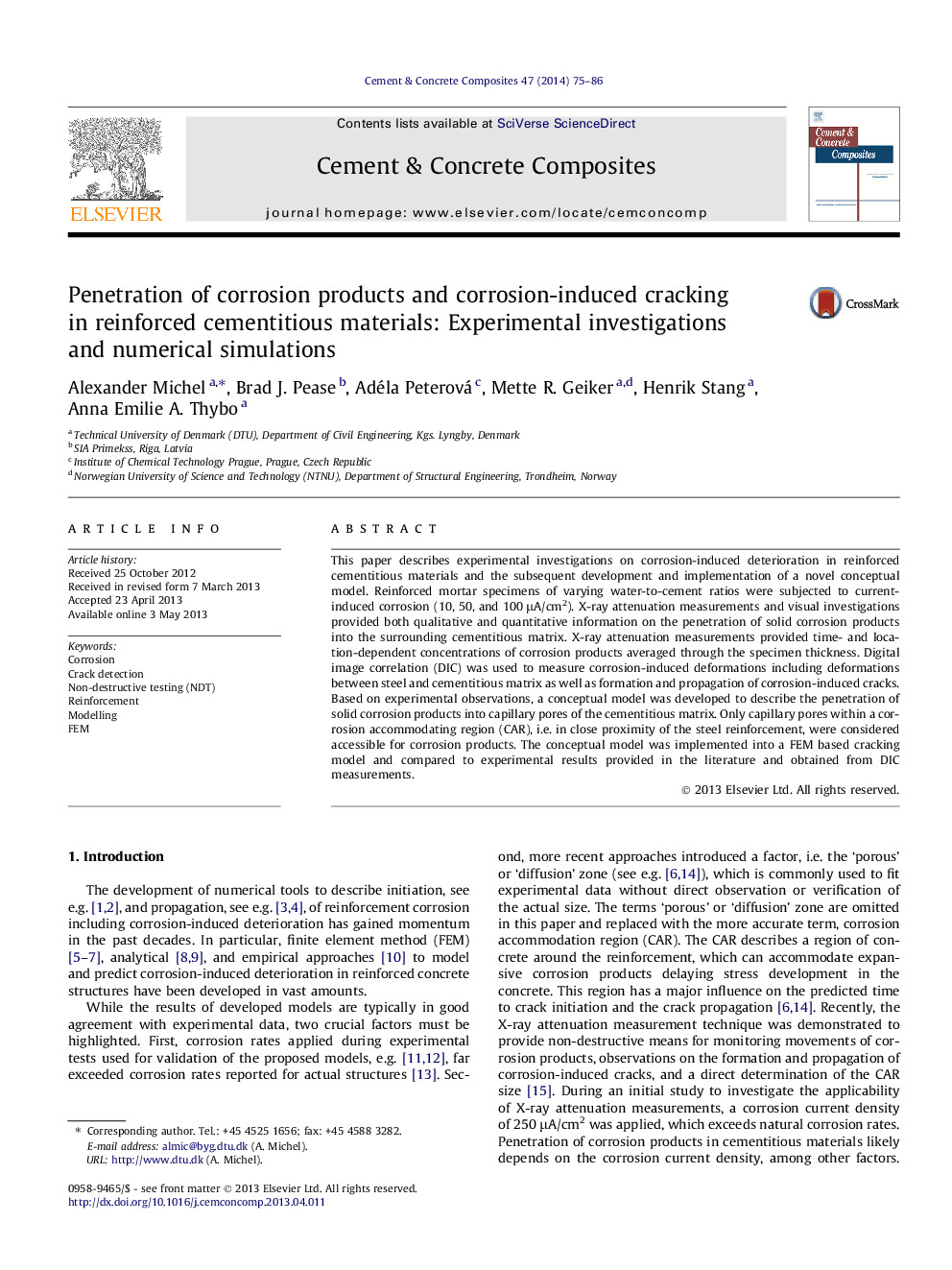| Article ID | Journal | Published Year | Pages | File Type |
|---|---|---|---|---|
| 1454772 | Cement and Concrete Composites | 2014 | 12 Pages |
This paper describes experimental investigations on corrosion-induced deterioration in reinforced cementitious materials and the subsequent development and implementation of a novel conceptual model. Reinforced mortar specimens of varying water-to-cement ratios were subjected to current-induced corrosion (10, 50, and 100 μA/cm2). X-ray attenuation measurements and visual investigations provided both qualitative and quantitative information on the penetration of solid corrosion products into the surrounding cementitious matrix. X-ray attenuation measurements provided time- and location-dependent concentrations of corrosion products averaged through the specimen thickness. Digital image correlation (DIC) was used to measure corrosion-induced deformations including deformations between steel and cementitious matrix as well as formation and propagation of corrosion-induced cracks. Based on experimental observations, a conceptual model was developed to describe the penetration of solid corrosion products into capillary pores of the cementitious matrix. Only capillary pores within a corrosion accommodating region (CAR), i.e. in close proximity of the steel reinforcement, were considered accessible for corrosion products. The conceptual model was implemented into a FEM based cracking model and compared to experimental results provided in the literature and obtained from DIC measurements.
